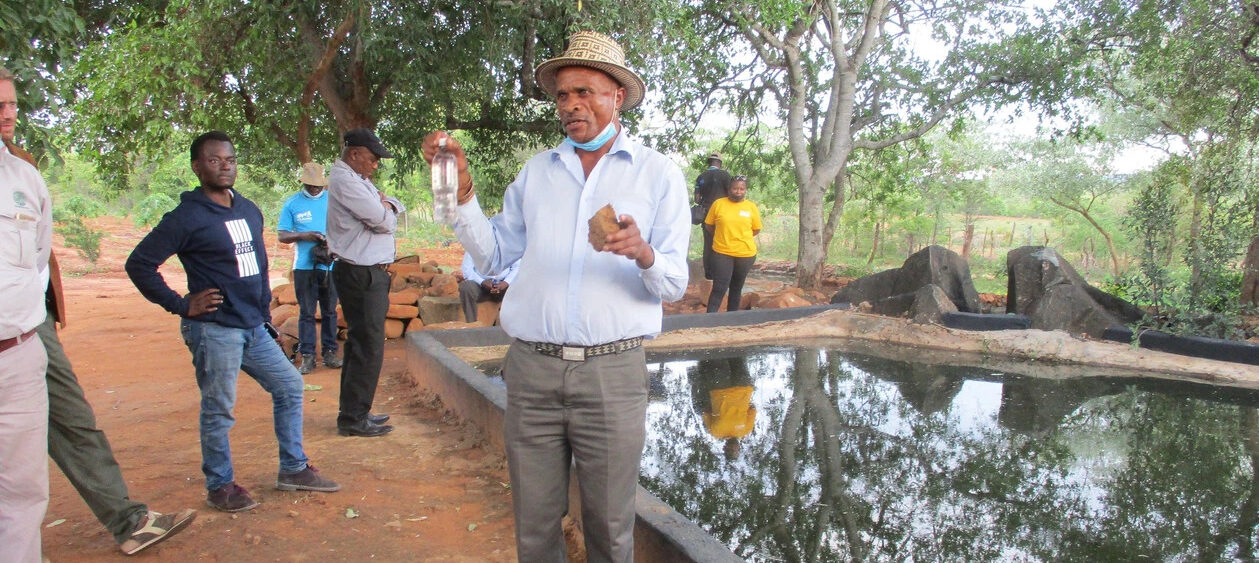“Water harvesting, in every sense should start at the household level. Water is sacred, and we have to nurture that love and relationship with water”
In this brief video, Nelson Mudzingwa from the Zimbabwe Small Holder Organic Farmers’ Forum explains the different techniques of water harvesting that is followed in six block of farms, cultivated with help from the Shashe Agroecology School.
He explains the use of dead level contours in preventing water from flowing off the land, and allows its infiltration into the soil.
“In the arable land we have nine earth dams and in the grazing area we have three earth dams. All the dams are connected in the arable land by a contour line. Our longest contour is almost 700 metres long, cutting across the arable land and connecting to homesteads. We have other contours that are less than 200 metres long. These contours are connected to the earth dams,” explains Nelson.
“Earth Dams, that can collect upto 200 cubic metres of water during heavy rains is another example of land-use that enable water harvesting”, he says. “Micro basins, about two feet deep, also help in harvesting water.”
“We also follow some upland techniques of water harvesting here. We build barriers, that can prevent run-off. All these techniques help us conserve the little rainfall we receive every year. Wet soil carries life, and we have to rely on all these techniques of water harvesting to survive a changing climate”. Nelson adds.
Watch the full video here:

